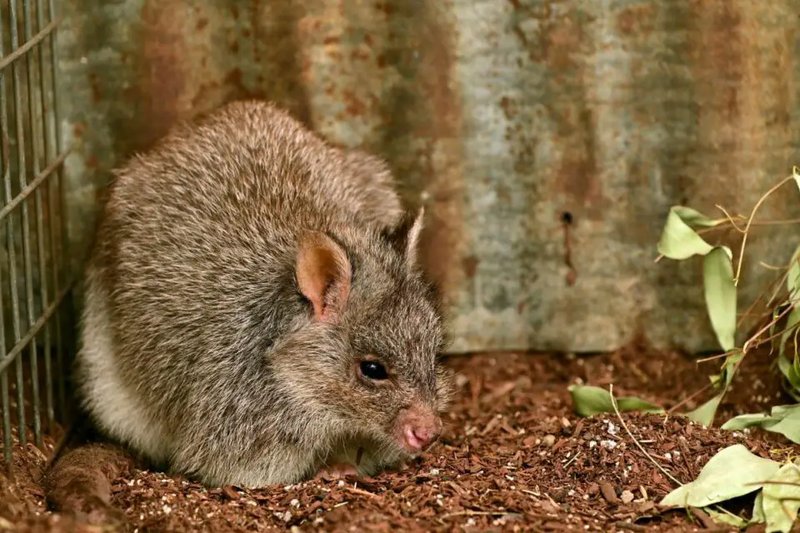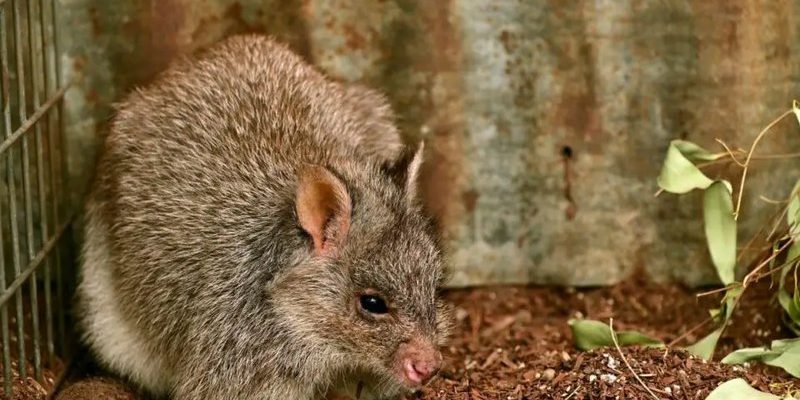
Understanding these animals can feel like piecing together a puzzle. Most people don’t recognize how closely related some animals are, or how their differences can be subtle yet significant. If you’ve ever wondered how to identify these animals, you’re in luck! Let’s explore ten animals similar to the possum and learn how to tell them apart, so you can impress your friends with your newfound knowledge over coffee.
1. Opossums
Let’s start with the obvious—the opossum. It’s crucial to note that not all possums are opossums; they belong to different families. The opossum (Didelphis virginiana) is the only marsupial native to North America. With their bobtail, white face, and black ears, they might remind you of a mischievous character from a children’s book. Opossums are known for their ability to “play dead” when threatened, a pretty clever survival tactic.
You might spot them rummaging through trash or gracefully crossing roads at night. They have a remarkable resistance to rabies, which is quite rare in the animal world. So, if you see one in your backyard, remember they’re more beneficial than harmful; they eat pests like ticks and insects!
2. Sugar Gliders
Next up, we have sugar gliders. These cute little marsupials have large eyes, a love for sweet fruits, and a penchant for gliding through the night sky. At first glance, you might mistake them for tiny flying squirrels, but they’re actually more closely related to possums. Sugar gliders have a membrane that extends from their wrists to their ankles, allowing them to glide effortlessly between trees.
They’re social creatures that thrive in groups, often seen cuddling together. If you spot one, you’ll likely hear their delightful chirps and barks. Unlike opossums, sugar gliders are well-adapted to life in the trees, showcasing an agile lifestyle.
3. Bandicoots
Another animal in this family is the bandicoot. These small, nocturnal marsupials have a similar body shape to the opossum but with a more elongated snout. Bandicoots are found mostly in Australia and New Guinea, and they’re often mistaken for rodents due to their size and habit of foraging for food on the ground.
Their diets consist of insects, worms, and roots, which can make them quite beneficial for the ecosystem. While they’re less common in urban settings, spotting a bandicoot in the wild can feel like discovering a hidden gem in nature.
4. Quokkas
If you’re looking for a smile on a rainy day, check out the quokka. These adorable marsupials, often called “the world’s happiest animal,” are about the size of a domestic cat and hail from Australia, particularly Rottnest Island. Their round faces and friendly demeanor win over anyone who catches a glimpse.
Quokkas are herbivores and primarily feed on grass and leaves. They’re not as closely related to opossums as some others on this list, but they share marsupial roots. Quokkas can be distinguished by their larger size and less elongated faces compared to opossums.
5. Wombats
Another fascinating member of the marsupial family is the wombat. These stocky, furry creatures are native to Australia and come with a very distinct appearance: short legs, a broad body, and a cute, flattened face. Wombats dig elaborate burrows and are primarily nocturnal, spending their days lounging around to conserve energy.
Though they don’t resemble possums much, they share similar habitats and are both part of the marsupial family. Wombats are generally larger and sturdier than opossums. You wouldn’t mistake the two during your next wildlife encounter.
6. Tasmanian Devils
The Tasmanian devil is another interesting marsupial that you might not automatically associate with possums. With their stocky build and unique black fur, they’re quite different from the more delicate opossum. Found only on the island of Tasmania, they have a reputation for their fierce temperament and loud, disturbing calls.
Tasmanian devils are scavengers, primarily eating carrion. While they share some family lineage with possums, they stand out due to their size and behavior. They’re quite rare nowadays, grappling with threats like disease and habitat loss.
7. The Eastern Cottontail
Moving into the world of rabbits, the eastern cottontail is a great example of how diverse the animal kingdom can be. These fluffy little creatures are known for their large ears and distinctive cotton-like tails. Unlike marsupials, cottontails are lagomorphs, which means they reproduce quickly and can easily adapt to different environments.
While they don’t have much in common with possums, they often share similar habitats in suburban areas, making them easy to confuse for those not paying close attention. Cottontails are herbivores and spend their evenings munching on grasses, making them easy to spot at dusk.
8. European Hedgehogs
The European hedgehog is another charming creature that’s surprisingly similar to the possum in that it can be found in gardens and parks. They have a round, spiky exterior and are known for their quirky habit of curling into a ball when threatened. Hedgehogs are insectivores, which means they feast mostly on beetles and worms.
To distinguish them from possums, think about size and shape: hedgehogs are much smaller, and their spines give them a unique look. While both animals forage at night, their diet and defense mechanisms make them stand apart.
9. Spiny Anteaters (Echidnas)
The spiny anteater, or echidna, is another fascinating animal. Like the platypus, they’re one of the few egg-laying mammals, or monotremes. Echidnas have spiky fur and a long snout, which they use to dig for ants and termites. They might seem odd compared to a fluffy possum, but both share an instinct for survival in their respective habitats.
In terms of similarities, echidnas live in similar ecosystems as possums (in Australia) but are far less social. If you see one, you’ll usually spot it alone, scuttling about as it searches for food.
10. Anteaters
Lastly, let’s talk about anteaters. These unique creatures can be found in Central and South America. They have long snouts, perfect for slurping up ants from their nests, but they differ significantly in lifestyle and habitat from the opossum. Anteaters are larger and more specialized in their feeding habits.
Although possums and anteaters share a similar insectivorous diet, their physical appearance and behaviors are quite different. Anteaters are more solitary and have powerful claws to help them dig, whereas possums are known to be more adaptable in urban settings.
So there you have it—ten animals that share a resemblance with the possum, each with their unique traits and quirks. The world of marsupials is rich and varied, and understanding these similarities can deepen your appreciation for wildlife. Next time you’re out and about, you might spot an opossum or one of its interesting relatives and remember the little details that set them apart.
Whether it’s the playful sugar glider, the endearing quokka, or the fierce Tasmanian devil, these animals remind us of the diversity of life on our planet. So keep exploring, and who knows what other delightful discoveries await you in nature’s playground!

